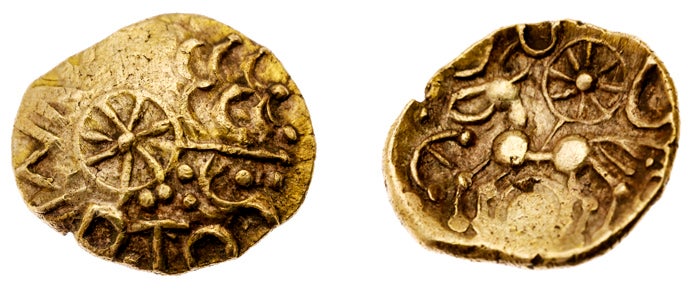A new king has been added to Britain’s history books
Esunertos was once forgotten, but now his name looms large in the historic record
Your support helps us to tell the story
From reproductive rights to climate change to Big Tech, The Independent is on the ground when the story is developing. Whether it's investigating the financials of Elon Musk's pro-Trump PAC or producing our latest documentary, 'The A Word', which shines a light on the American women fighting for reproductive rights, we know how important it is to parse out the facts from the messaging.
At such a critical moment in US history, we need reporters on the ground. Your donation allows us to keep sending journalists to speak to both sides of the story.
The Independent is trusted by Americans across the entire political spectrum. And unlike many other quality news outlets, we choose not to lock Americans out of our reporting and analysis with paywalls. We believe quality journalism should be available to everyone, paid for by those who can afford it.
Your support makes all the difference.A new King has been added to British history and a world record set after a coin found in a Hampshire field fetched more than £20,000 at auction.
Dating from around 50 BC and smaller than a human fingernail, the gold coin is stamped with the name Esunertos, a previously unrecorded Iron Age ruler.
The find by detectorist Lewis Fudge has been described by experts as “one of the outstanding discoveries of recent decades”.
The coin was dug up by Lewis in a farmer’s field in March this year after he got permission to detect.
Lewis said: “I am over the moon, if it were not for people in the auction room I would have jumped around.
“The collectors I spoke to are gobsmacked. I’m so glad I did not take them up on their private offers before the auction.
“To think my find has generated its own Wikipedia page, is incredible.”

The coin bears the name and it dates to the very beginning of written language appearing in the British Isles.
Expected to fetch around £4,000, frenzied bidding at auctioneers Spink saw the price rise to £20,400, including premium, beating the world record for a similar type of coin, a ‘Medusa’ Quarter-Stater set at £10,800.
It was struck sometime between 50 and 30 BC, shortly after Julius Caesar’s first Roman raid of Britain in 55 BC.
He landed on the Kent coast from a fleet of ships carrying 20,000 Roman soldiers.
Waiting for them on the beach were thousands of Celtic warriors but the Romans were forced to return home after struggling to land and rough seas wrecking their boats.
Caesar returned the following year with 50,000 soldiers defeating many tribes and marched all the way to the River Thames.
But after three months of fighting, they left to stop a rebellion in Gaul.
The long-term settlement of Britain by Rome didn’t occur until 43 AD when Claudius was emperor.

Leading Iron Age experts have since studied the coin and deduced it to be struck by a pre-eminent male figure dubbed ‘IISVNIRTOS’ whose name translates as ‘Mighty as the God Esos’.
One theory is that he possibly ruled as King from nearby Danebury Hill fort.
Dr John Sills of the Celtic Coin Index at the Ashmolean Museum said: “It is one of the outstanding discoveries of recent decades in Celtic numismatics.”
Gregory Edmund, Iron Age Coin Specialist at auctioneers Spink who led the team of experts in the recording of this new find added: “This fabulous piece of prehistoric artwork completes the mental image we have when we think of Iron Age Britain – the war horse and chariot.
“But it also surprises us with the appearance of classical languages like Latin.
“This is the reason I come to work; to document the discoveries of national importance and share that knowledge directly with museums and amongst academics, collectors and the public at large.”
Mr Edmund continued: “On a personal note, this find is particularly vindicating for me.
“I focused my university degree on the Roman invasion of Britain through the lens of Britain’s first coinage.
“To now add a critically important contemporary witness to those seismic events in the birth of our island’s story is electrifying.
“Despite the coin’s diminutive size, the name of its conceiver - Esunertos - now truly echoes down the ages.
“Esunertos was once forgotten, but now his name looms large in the historic record.”



Join our commenting forum
Join thought-provoking conversations, follow other Independent readers and see their replies
Comments